Thomas E. Ricks's Blog, page 177
June 15, 2012
Senators sniff Brett McGurk's underwear
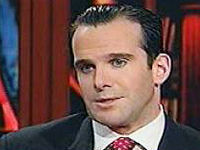
Is anybody else bothered that the U.S.
Senate is going through Brett
McGurk's old e-mails to his lover, whom he married? What business is it of
the U.S. Senate? I mean, it isn't like the guy is going on a soft ride to
Paris. He is up to be the ambassador to Baghdad. They should be thanking him
for being willing to go to live in one of the world's worst climates, where
violence is still rampant, and where the Iranians will make his professional
life not so much fun.
Where is our sense of decency? I think the Senate owes this
man an apology -- an apology, sir.
June 14, 2012
Jason Fritz on why not to attack Syria

From the Ink Spots blog comes this, as good a statement as
I've seen of why we should not intervene militarily in Syria:
I am with Dr. Slaughter in her
disgust for the Syrian regime for what they are doing to their own people. I
agree that they have violated their responsibilities as leaders. But I hesitate
to support the use American military force to wage war in an action that is
likely to result in the deaths of more civilians than the regime's current
actions. Values are an American interest, but are they worth war without
overwhelming support from the rest of the globe? I don't think so. Values are a
great reason to flex the United States' ample diplomatic and economic
capabilities as this approach is more in line with our values.
Tom again: Also, once we intervene, I think we are in part
responsible for subsequent events. What if the eventual winner in Syria starts
driving out or killing minority groups? Do we intervene again?
A reader reacts to yesterday's photo of two heavily laden soldiers in Zabul Province

By Ryan Woods
Best Defense department of the
soldiers' load
Just a quick hit on the picture on your Afghanistan
piece today that I've just been thinking about lately. Seriously, the combat loads that the U.S. military
saddles people with are just crazy pants. 60 lbs just to walk around? INSANE.
Batshit crazy. Foolish. Dangerous. Stupid.
Even the military's own reduction goals per that report are in no way
adequate. They need to be shooting for a weight reduction along the lines of
80-90 percent (at least). In other words a total re-imagining of
what it is our troops NEED to be lugging around, the design/materials/build of
every last piece of equipment and probably for good measure, a reassessment of
how each piece of stuff promotes an actual part of whatever given mission...all
the way up to how each piece of stuff supports our overarching strategy in a theater.
Probably the best place to model this on would be to take a page from
(unfortunately named) "extreme alpinism." EA is as much a philosophy as a
segment of the sport, positing (basically) that every gram you carry does
nothing but slow you down and expose you to more danger on your climb and so
you should only bring the absolute brutal minimum. Weight = time = danger. It sounds insane but in the
last 20 years or so it has been the philosophy behind some pretty amazing feats, ones
that are simply impossible using a convention load. Ultralight
backpacking is of a piece if not quite as...er...extreme. (See here also.)
This approach leads to a virtuous circle: lighter, more selective equipment
leads to being able to use lighter, more selective equipment and the ability to
move faster...necessitating less equipment...whereas the current paradigm forces
heavier and heavier loads as a way to "manage" the heavier and heavier
loads. The perfect example of this is the water loads, WTF! Duh, if a guy
has to wear 60 lbs of crap to walk around in the summer, he is going to sweat
balls and need to drink like a fool, which means he has to carry more water,
which means he has to drink more water just to carry all his water. Bangs head.
Or...why does a guy need big huge boots? To keep from turning an ankle trying to
run under fire whilst carrying 100 lbs of crap he's never going to use. Of course!
And I'm sorry, but if you were an Afghan villager, and one of these
sweating alien-looking a-holes in moon-boots plopped down in your village, would
you be helpful or just derisive? Yeah, me too.
I imagine that the single thing most corrosive here is the body
armor/helmets. And believe me, I totally get why someone would want to
wear it. But it is just like a medieval knight...too bogged down, sweaty,
and hot with the weight to be effective. Weight = time =
danger. And I am sure that the armor, just like a knight's armor, physically
removes people from interacting.
Side benefit: Even if they get the full load down to 20 lbs (an amazing, if
not really radical, reduction in crap), you are looking at female soldiers being
comparably much more effective.
I am not now nor have I ever been in the military. I am however a
lifelong serious outdoors junkie and know a thing or two about being outside
and figured I'd toss out a totally different paradigm.
Ryan Woods is a
lifelong backcountry skier, hunter, outdoorsy
gear obsessive who has been known to overpack but recognizes the value of light
packing.
Continuing erosion at NDU
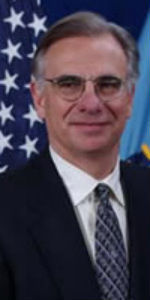
I heard yesterday that Hans Binnendijk,
one of the pillars of the National Defense University, is quietly leaving out
of unhappiness with its decline as an intellectual institution. Word is that Binnendijk, who has worked on
Capitol Hill, at the State Department, and at the White House, as well as in
academia, is resigning and moving to Johns Hopkins SAIS in three weeks.
Part of the problem with the place is that the generals and admirals overseeing
the place don't know much about how to run a university, and wouldn't know
intellectual firepower from a day-old dud. There's also fear that with a
defense budget squeeze looming, big cuts are going to hit the PME world.
June 13, 2012
Is the defense budget going to collapse?

Nora Bensahel of CNAS, speaking at the CNAS conference, says
yep. She predicts the defense budget will be cut by more than people think, and
that ground forces will be hit hardest by the shortfall.
Dov Zakheim, former Pentagon comptroller, disagreed.
The Afghan war: About to get interesting
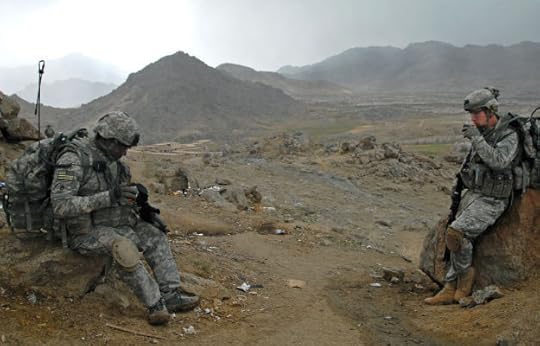
Maj. Fernando Lujan gave a fast-paced, lively talk on the
future of the American mission in Afghanistan.
His interlocutor, Rajiv
Chandrasekaran, kicked off this part of the
CNAS conference with a provocative question: Aren't most Afghan soldiers
lazy, corrupt guys just waiting to shoot an American soldier in the back?
Lujan tackled that one quickly. Yes, he said, there are some
terrible and corrupt senior leaders in the ranks. But for every one of them, he
said, there are several good aggressive junior leaders. As for shooting
Americans, he said, some of those incidents come from the Taliban, but others
are the result of the "well of resentment" that builds up when Afghan soldiers
see the contrast between how they live on a base and how Americans have air
conditioning, the internet and other "luxuries." Afghan soldiers are also treated insensitively, and
spoken to as if they were recruits being corrected by a drill instructor.
Furthermore, he said, the Afghan perspective tends to be different -- our
people are on a one-year sprint, and want to see results, while many Afghans
have been in the fight a long time.
The Afghan war is about to get very interesting, Lujan said.
"The really hard part begins right now."
With the number of American troops declining, he explained, American advisors
increasingly will be forced to let the Afghans lead the way, and do it their
way.
One place to watch, he said, is Zabul Province, just north
of Kandahar, where the Taliban is very active and where two Afghan battalions
are operating "without coalition assistance." The problems the Afghans
encounter are not lack of infantry training or ardor, but lack of medics,
mechanics, and logistical support.
Lujan
heads back to Afghanistan in a couple of months for another tour of advisory
duty, Chandrasekaran said.
If you are a glutton for Afghan stuff, here is another
discussion, from the American Security Project.
Remember Taiwan?

For a security conference focused on the U.S. in Asia, it
is amazing how little Taiwan is mentioned. I can remember when it dominated
discussions of the American relationship with China. I think this is a sign of
progress.
Live from the CNAS policy hoedown: This year's hot topic is the U.S. in Asia
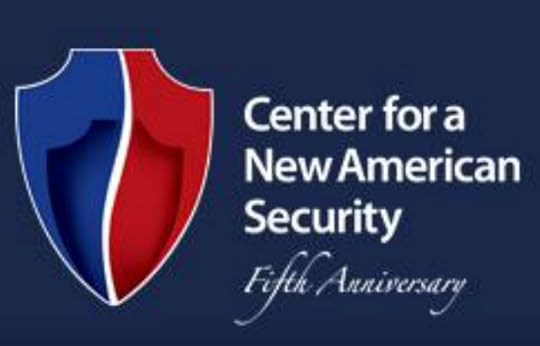
I'm at the annual day-long conference that CNAS throws every
year. Clearly the hot topic this year is the U.S. in Asia.
Lurking just underneath that is the state of the U.S.
economy. Kurt Campbell, the assistant secretary of State for East Asia, began
the festivities talking about the U.S. in Asia but took a surprising detour
into the problems smaller American companies have in learning how to operate in
Asia. Because of the size and health of the American economy for many decades,
he said, "many companies haven't had to think about exports until recently."
Campbell, who was one of the founders of CNAS before going
back into gummint, also said that the U.S.-China relationship is the most
complex of any bilateral relationship the U.S. has ever had. It is an
interesting assertion, but I suspect that the American relationship with Great
Britain was more complicated, at least in the first 100 years of U.S. history.
He also said that the United States needs to work more
closely with Europe on Asian issues -- trade, human rights, and political
developments. I am not quite sure where he is going with this, or what it
means.
If you want to watch the conference, just click here.
June 12, 2012
Quote of the day: What sort of personnel system does the U.S. Army have?
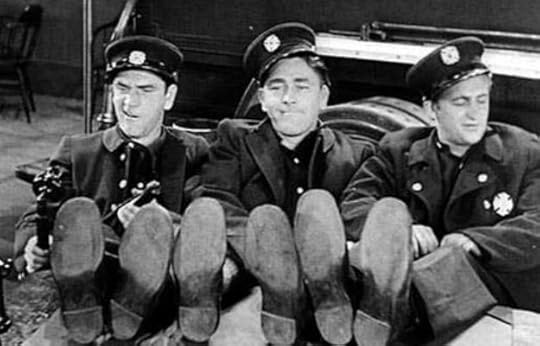
From
an article by one of my heroes, Lt. Gen. Walter Ulmer Jr., USA (ret.), in the
new issue of Army magazine: [T]he personnel system that
cannot distinguish between the revered and the despised must have a fundamental
flaw."
What I learned at a think tank

By Lt. Col. Tom Cooper, USAF
Best Defense fine fellow
After
a year as the Air Force Fellow at the Center for a New American Security, I
think I finally understand how think tanks help make the world work. Prior to this, I had no practical sense of
how think tanks are useful in policy debates in Washington. During Air Force Fellows orientation in
August of 2011, Peter
Singer from Brookings Institution told us, "Think tanks are like the bicycle
chain that links the policy world with the research world, applying academic
rigor to contemporary policy problems." This analogy became even more clear when I examined what one military
service might do with a report published by a think tank.
A
recent CNAS report titled "Sustaining
Preeminence: Reforming the U.S. Military at a Time of Strategic Change" is a great example of
how think tank reports are useful. Recommendations in the report impact diverse organizations and will
upset some and please others. The
tension created by pleasing some and angering some is exactly what powers the
bicycle chain described by Singer. How
the pedals are turned by policy actors is what makes the report useful and can
help shape future dialogue.
Two
issues in the report related to the Air Force can be examined to understand how
one organization can turn the cranks moving the chain -- even if in different
directions. The first is the ongoing
debate about force structure changes and how a think tank recommendation can be
used. The second is the report's
misperception of how the Air Force has changed over the past decade and how a
service can use the report to correct or improve messaging efforts.
In
"Sustainable Preeminence," the authors take a stand on a contentious Air Force
issue -- cuts to the Air National Guard in the FY13 budget. Based on independent examination, the authors
conclude that "reductions to the reserve component proposed by the Air Force in
the FY2013 budget are reasonable." This
statement is incredibly useful for the Air Force. The authors, not known for their support of
air issues, conclude these changes are good and should be encouraged to explain
their conclusion. The Air Force could
use the support presented in this report and work with CNAS to reinforce this
message on Capital Hill.
The
second issue in "Sustainable Preeminence" relates to what the Air Force has
been doing to support recent conflicts and how it has transformed to support
the other services. The report
states: "The infusion of billions of
dollars in the past decade has moved the services away from deeper integration
and interdependence, as each service has sought greater self-sufficiency rather
than rely upon the capabilities of other services." This statement is not true for the Air Force.
Over
the past decade, the Air Force has changed air mobility methods, ISR force
structure (everything
from the number of remotely piloted aircraft patrols to a 4000 percent increase in
processing, exploitation, and dissemination of intelligence to tactical forces),
how
combat air support is directly connected to the warfighter, and modifying
aircraft and weapons to support ground force engagements. These examples are proof the Air Force has
moved towards greater integration and interdependence, all while reducing
end-strength and force structure. The
lack of understanding demonstrated in the report is an example of how services,
and the Air Force in particular, can identify misperceptions and help inform
the research world. The Air Force can
use this to plan future interactions with the think tank community.
In
spending the last year at CNAS, I've learned how the think tank research
process is useful in creating policy. By
watching how reports like "Sustainable
Preeminence"
are produced, I've seen how important it is to work with think tanks to achieve
policy outcomes. The process that
sometimes creates tension shouldn't lead to greater tension, instead policy
actors would do better to recognize how to turn the pedals and use the "chain
linking the policy world and the research world" as a way to help advance their
interests.
Lt. Col. Tom Cooper is
the
Air Force fellow at the Center for a New American Security
. He flew the E-3 Sentry, SAMFOX C-9s in the 89
AW and C-40s as commander of the AF Reserve's active
associate 54 AS.
Thomas E. Ricks's Blog
- Thomas E. Ricks's profile
- 436 followers



